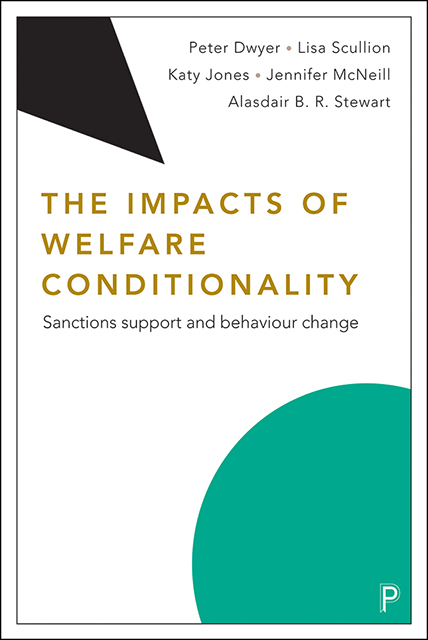118 results
Fall or spring aminopyralid applications control Taeniatherum caput-medusae
-
- Journal:
- Invasive Plant Science and Management / Volume 17 / Issue 1 / March 2024
- Published online by Cambridge University Press:
- 29 February 2024, pp. 46-54
-
- Article
-
- You have access
- Open access
- HTML
- Export citation
The process and perspective of serious incident investigations in adult community mental health services: integrative review and synthesis – ERRATUM
-
- Journal:
- BJPsych Bulletin , FirstView
- Published online by Cambridge University Press:
- 26 January 2024, pp. 1-2
-
- Article
-
- You have access
- Open access
- HTML
- Export citation
The process and perspective of serious incident investigations in adult community mental health services: integrative review and synthesis
-
- Journal:
- BJPsych Bulletin , FirstView
- Published online by Cambridge University Press:
- 04 January 2024, pp. 1-13
-
- Article
-
- You have access
- Open access
- HTML
- Export citation
The Impact of Prophylactic Medication Use on the Recurrence of Bipolar Episodes in the BDRN Pregnancy Study
-
- Journal:
- BJPsych Open / Volume 9 / Issue S1 / July 2023
- Published online by Cambridge University Press:
- 07 July 2023, p. S191
-
- Article
-
- You have access
- Open access
- Export citation
Chapter 22 - Forensic Neurodevelopmental Disabilities: A Perspective from Ontario, Canada on Pathways and Services
- from Section 3 - Criminal Justice Pathways and Legal Issues
-
-
- Book:
- Forensic Aspects of Neurodevelopmental Disorders
- Published online:
- 18 May 2023
- Print publication:
- 01 June 2023, pp 265-276
-
- Chapter
- Export citation
Assessment and management of feeding difficulties for infants with complex CHD
-
- Journal:
- Cardiology in the Young / Volume 33 / Issue 1 / January 2023
- Published online by Cambridge University Press:
- 23 December 2022, pp. 1-10
-
- Article
- Export citation
Eight - Conclusions
-
- Book:
- The Impacts of Welfare Conditionality
- Published by:
- Bristol University Press
- Published online:
- 17 June 2023
- Print publication:
- 22 November 2022, pp 155-160
-
- Chapter
- Export citation
Four - From welfare to work? The effectiveness of welfare conditionality in moving people into paid employment
-
- Book:
- The Impacts of Welfare Conditionality
- Published by:
- Bristol University Press
- Published online:
- 17 June 2023
- Print publication:
- 22 November 2022, pp 68-93
-
- Chapter
- Export citation
Two - Conditionality in the UK welfare state
-
- Book:
- The Impacts of Welfare Conditionality
- Published by:
- Bristol University Press
- Published online:
- 17 June 2023
- Print publication:
- 22 November 2022, pp 20-47
-
- Chapter
- Export citation
Frontmatter
-
- Book:
- The Impacts of Welfare Conditionality
- Published by:
- Bristol University Press
- Published online:
- 17 June 2023
- Print publication:
- 22 November 2022, pp i-iv
-
- Chapter
- Export citation
Six - Unintended outcomes? The wider impacts of compulsion and benefit sanctions in social security
-
- Book:
- The Impacts of Welfare Conditionality
- Published by:
- Bristol University Press
- Published online:
- 17 June 2023
- Print publication:
- 22 November 2022, pp 116-136
-
- Chapter
- Export citation
Index
-
- Book:
- The Impacts of Welfare Conditionality
- Published by:
- Bristol University Press
- Published online:
- 17 June 2023
- Print publication:
- 22 November 2022, pp 202-207
-
- Chapter
- Export citation
References
-
- Book:
- The Impacts of Welfare Conditionality
- Published by:
- Bristol University Press
- Published online:
- 17 June 2023
- Print publication:
- 22 November 2022, pp 169-201
-
- Chapter
- Export citation
Three - Welfare conditionality and behaviour change
-
- Book:
- The Impacts of Welfare Conditionality
- Published by:
- Bristol University Press
- Published online:
- 17 June 2023
- Print publication:
- 22 November 2022, pp 48-67
-
- Chapter
- Export citation

The Impacts of Welfare Conditionality
- Sanctions Support and Behaviour Change
-
- Published by:
- Bristol University Press
- Published online:
- 17 June 2023
- Print publication:
- 22 November 2022
About the authors
-
- Book:
- The Impacts of Welfare Conditionality
- Published by:
- Bristol University Press
- Published online:
- 17 June 2023
- Print publication:
- 22 November 2022, pp viii-viii
-
- Chapter
- Export citation
Five - Welfare conditionality and problematic or antisocial behaviour
-
- Book:
- The Impacts of Welfare Conditionality
- Published by:
- Bristol University Press
- Published online:
- 17 June 2023
- Print publication:
- 22 November 2022, pp 94-115
-
- Chapter
- Export citation
List of abbreviations
-
- Book:
- The Impacts of Welfare Conditionality
- Published by:
- Bristol University Press
- Published online:
- 17 June 2023
- Print publication:
- 22 November 2022, pp vii-vii
-
- Chapter
- Export citation
Contents
-
- Book:
- The Impacts of Welfare Conditionality
- Published by:
- Bristol University Press
- Published online:
- 17 June 2023
- Print publication:
- 22 November 2022, pp v-v
-
- Chapter
- Export citation
Methods appendix
-
- Book:
- The Impacts of Welfare Conditionality
- Published by:
- Bristol University Press
- Published online:
- 17 June 2023
- Print publication:
- 22 November 2022, pp 161-168
-
- Chapter
- Export citation



